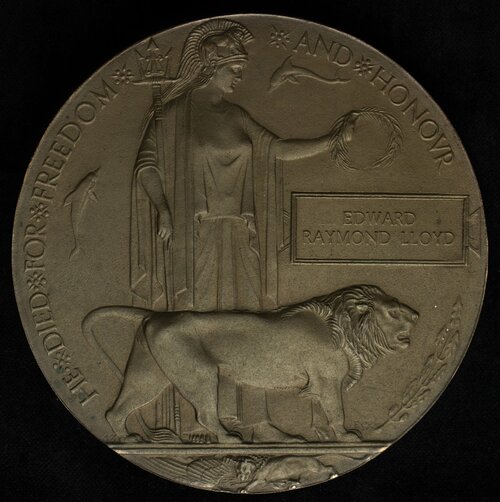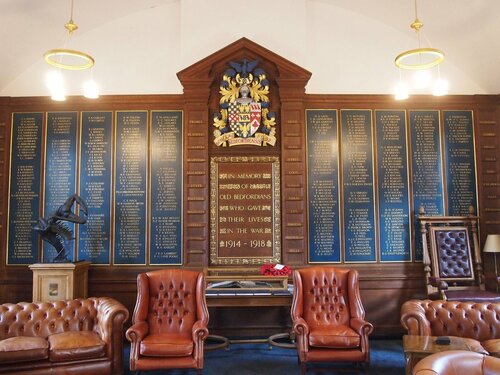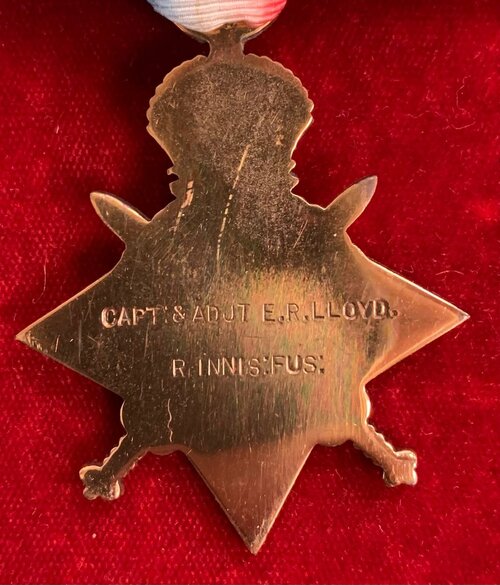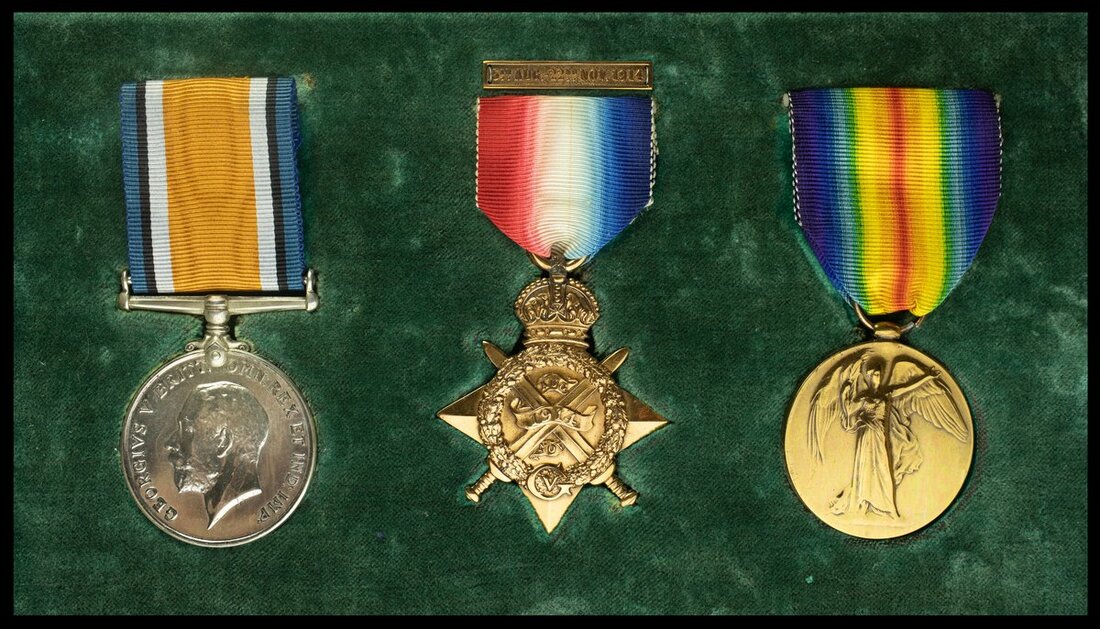Auction: 22101 - Orders, Decorations and Medals - e-Auction
Lot: 349
'The battle on this day 26th August [1914] was of the most severe and desperate character. The troops offered a superb and most stubborn resistance to the tremendous odds with which they were confronted, and at length extricated themselves in good order, though with serious losses and under the heaviest artillery fire.'
Belfast News Letter, 31 August 1914, on the actions of the 2nd Inniskillings at Le Cateau
The poignant 1914 casualty campaign group of four awarded to Captain & Adjutant E. R. Lloyd, 2nd Battalion, Royal Inniskilling Fusiliers, who was mortally wounded at Cambrai-Le Cateau on 26 August 1914 and was 'mentioned' for his gallant and distinguished conduct in the field
1914 Star, clasp (Capt: & Adjt E. R. Lloyd. R. Innis: Fus:); British War and Victory Medals (Capt. E. R. Lloyd.); Great War Bronze Memorial Plaque (Edward Raymond Lloyd), the Trio housed on an old memorial board, with the clasp mounted above the Star and sometime mounted in a glazed frame, nearly extremely fine (4)
M.I.D. London Gazette 4 December 1914 (dated 8 October 1914 by Sir John French).
Edward Raymond Lloyd was born on 13 November 1882, elder surviving son of Lieutenant-Colonel Edward Lloyd, Indian Cavalary. Young Lloyd was educated at Bedford Grammar, being a good all-round sportsman. He represented his School in the Public Schools Boxing Competition held at Aldershot in 1899 and was also a good rifle and pistol shot (The Times, 12 February 1915, refers). After Bedford he went up to Sandhurst, from which he was commissioned 2nd Lieutenant into the 1st Battalion, Royal Inniskilling Fusiliers on 22 October 1902. Promoted Lieutenant on 1 January 1905, he transferred to the 2nd Battalion, then in Egypt and was made its Adjutant in August 1911, being placed in Command of a Company in February 1912.
Upon the outbreak of the Great War, he landed in France on 23 August 1914, moving straight into the crucible of Battle at Le Cateau just days after landing. Placed at the very left of the British line, facing overwhelming odds from a buoyant German Army, the Regiment were without established trenches and required to make do with what cover existed or could be hastily created. Adhering to the orders of Smith-Dorrien, the troops were to stand and fight at Le Cateau, in an attempt to halt the rapid series of retreats up till that point. The attack began before dawn with a move by the German Jagers, to encircle the Inniskillings, but they were driven back by accurate rifle fire. This set a pattern for the rest of the day, until an organised withdrawal was arranged. Lloyd was mortally wounded on 26 August (De Ruvigny, refers), the wounds being officially recorded on 5 September and he died on account of his wounds in hospital in France on 3 December, the day before his 'mention' was published in the London Gazette. He is buried in the Port-de-Paris Cemetery, Cambrai and is further commemorated upon the Bedford School Memorial and the Royal United Services Institute Roll of Honour. His Medals were sent to his father at 36 Linden Road, Bedford. Besides being a soldier, Lloyd was a keen follower of hounds and was a frequent rider in Point-to-Point steeplechases. His CWGC is additionally inscribed:
'A Very Keen Soldier and Sportsman, Greatly Beloved'
Subject to 20% VAT on Buyer’s Premium. For more information please view Terms and Conditions for Buyers.
Sold for
£1,300
Starting price
£1000













